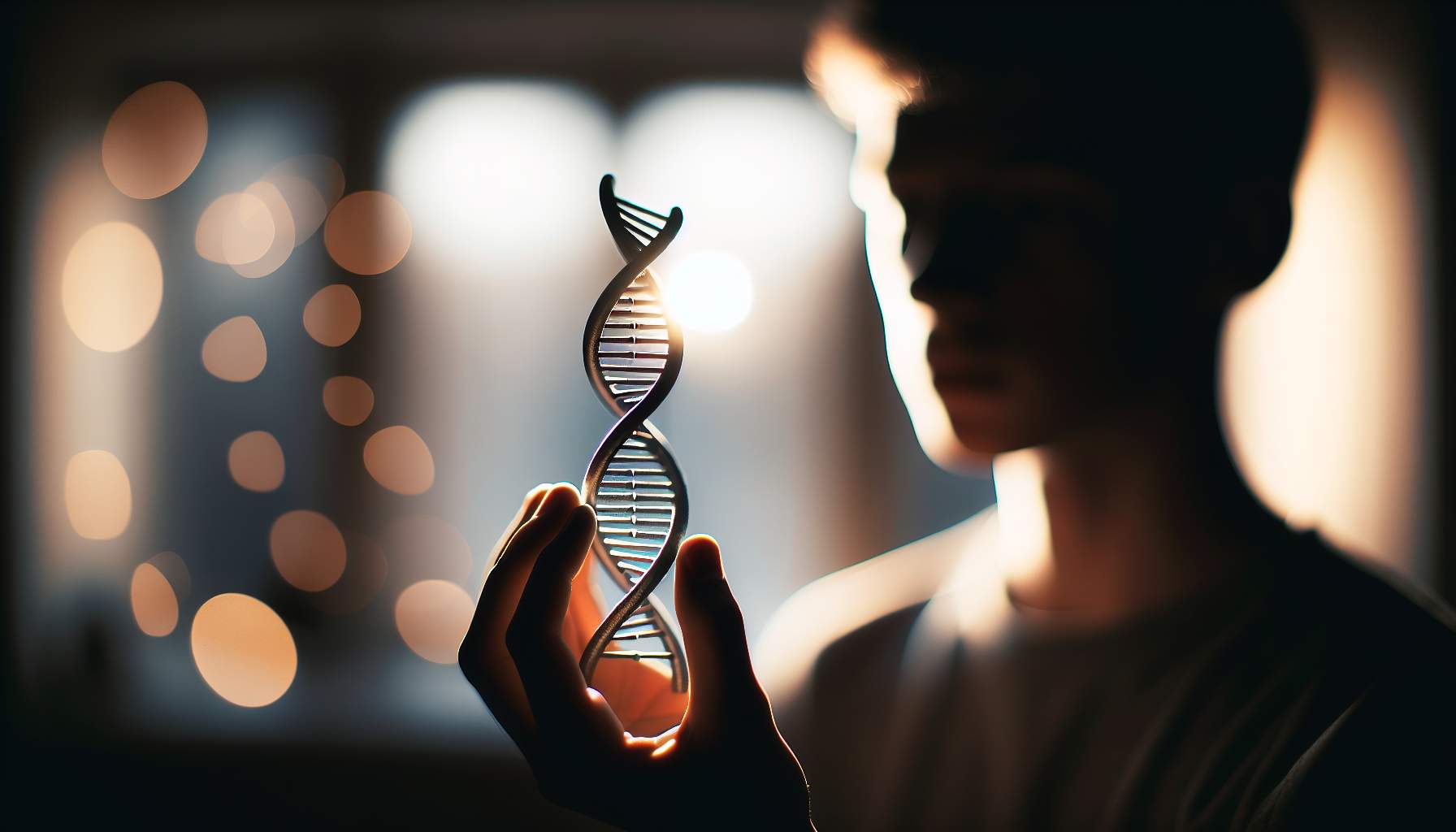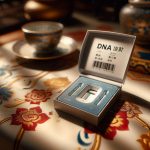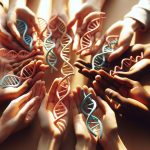Human Design stands out as a unique approach that combines ancient wisdom, like the principles found in I-ching, with modern science, such as quantum physics. This blend creates a framework to understand our innate genetic makeup. By tapping into this system, individuals can unlock the potential of their body’s own consciousness to make better decisions and embrace their authentic selves.
In an insightful discussion, Julia Krakova, an experienced analyst and educator in Human Design, elaborates on how this system is rooted in both historical traditions and cutting-edge scientific concepts. She offers tangible examples of its application in everyday scenarios, demonstrating its practical value. The conversation reveals how integrating Human Design principles into daily life empowers people to live more aligned with who they truly are.
How did you get started as a Human Design Analyst?
My journey into the realm of Human Design was not a sudden dive but rather a gradual immersion, fueled by an innate curiosity and a penchant for exploring the unknown. My academic background, initially rooted in economic cybernetics at the Belarussian State University, laid the groundwork for my fascination with systemic operations. This quest for knowledge didn’t stop there; it propelled me to Israel, where I pursued art studies at Tel Aviv University. Here, my intrigue shifted towards unraveling the mysteries of human creativity and soulfulness.
During my tenure as a photographer and visual editor at one of Israel’s prominent newspapers, I embarked on an exploratory sojourn to Asia. That trip widened my horizon beyond conventional bounds, introducing me to practices like yoga and meditation that highlighted the human body’s extraordinary capabilities.
Upon returning to Israel, I encountered Human Design, though initially skeptical about its efficacy. The turning point came when I received a professional reading as a birthday gift. It was nothing short of revelatory—a profound experience that resonated deeply with my innermost self-awareness.
Driven by an academic rigor, I delved into online resources about Human Design before realizing that formal education in this field was imperative for true mastery. This realization steered me towards completing my certification from the International Human Design School.
Today, as a certified Analyst and Guide in Human Design, I offer insights through various readings—spanning child development analysis to relationship dynamics—and lead courses globally. My commitment even extends to collaboratively working with the Israeli Ministry of Education on specialized programs aimed at enriching our understanding of human potential through design principles.
In essence, this voyage has been more than just acquiring knowledge—it’s been about uncovering layers within myself and assisting others in doing the same through Human Design
What is the Basic Concept of Human Design?
Human Design stands out as a revolutionary approach, weaving together wisdom from time-honored traditions like the Kabbalah, I-ching, Astrology, and Hindu teachings. However, it’s not just a mix of these old systems but something entirely new and tailored for today’s world. It speaks the language of ancient knowledge while offering insights that resonate with contemporary life.
At its core, Human Design draws significant inspiration from the I-Ching or The Book of Changes, an ancient Chinese text that delves into the dynamics of balance through Yin and Yang. This concept is encapsulated in Hexagrams, sets of six lines representing either Yin (broken lines) or Yang (unbroken lines). Remarkably, there are 64 Hexagrams, mirroring the 64 codons in human DNA. Over the years, thinkers like Marie-Louise von Franz and authors such as Martin Schonberger have highlighted this fascinating parallel between the I-Ching’s structure and our genetic code.
What makes Human Design truly unique is its personalized Bodygraph readings. No two charts are identical; each one mirrors an individual’s distinct genetic makeup. It’s more than just knowledge—it’s about experiencing these insights on a personal level. Engaging with your Bodygraph isn’t about adopting a new belief system but experimenting with these principles in real-life to discover their impact firsthand.
The essence of Human Design is to embrace our individuality rather than conform to societal expectations or emulate popular figures who don’t reflect our true selves. In doing so, we can avoid self-sabotage and honor our unique nature.
Starting with a professional reading from a certified analyst opens up a journey towards integrating this profound understanding into everyday life. It’s not an instant transformation; much like how substances take time to be absorbed by our bodies, assimilating this wisdom happens gradually at a cellular level — ultimately reshaping our view of ourselves and how we relate to others around us.
In short, Human Design offers a fresh lens through which we can understand ourselves better in this modern era by grounding us in both ancient wisdom and cutting-edge science—a guide for living authentically in tune with who we truly are.
Benefits of Understanding Your Design

Exploring the core facets of Human Design, it offers a deep dive into understanding oneself beyond simple genetic testing. Unlike receiving basic data from a DNA test, Human Design provides extensive insights into an individual’s physical and psychological blueprint. It meticulously outlines not only our ancestral lineage or dietary preferences but delves into intricate layers of our existence.
At the outset with a Foundation Reading, individuals gain access to tools that pave the way for recognizing their unique decision-making process. This foundational insight sheds light on how one navigates through life, interacts with others, and establishes trust in one’s instincts. It differentiates between relying on emotional guidance versus intuitive nudge, illustrating how each person’s approach to decision-making varies profoundly based on their inherent nature.
Diving deeper, Human Design unveils the diversity within us all by highlighting our innate qualities. Whether it’s embodying strength, creativity, innovative thinking or serving as an authority for others—each trait defines who we are at our core. The system remarkably categorizes people based on these traits, offering perspectives that enrich personal development and interpersonal relationships.
Moreover, it goes beyond personality assessments by providing actionable advice tailored to individual needs. From optimizing how one processes information to identifying suitable environments and dietary habits that align with one’s bodily requirements; Human Design offers practical solutions for holistic well-being.
Through analyzing primary sensory channels such as taste and touch or decoding genetic markers linked to psychological tendencies,Human Design serves as a comprehensive tool for self-discovery and empowerment. By embracing this knowledge, individuals can navigate life more harmoniously by aligning their actions with their authentic selves.
Exploring the Connection Between Human Design and DNA Analysis
Despite skepticism from the scientific community, Human Design offers fascinating insights into our genetic makeup. At its core, it draws parallels between traditional DNA analysis and its unique Bodygraph system. While still awaiting broader acceptance, certain elements of Human Design echo findings from molecular genetics, suggesting a deeper connection to our biological roots.
The system outlines two key genetic maps for each person: the Rave Mandala and the Bodygraph. These maps highlight amino acids through specific numerical sequences referred to as Gates, mirroring hexagram structures. Just like DNA consists of nucleotides pairing in a precise manner—akin to ancient I-Ching hexagrams’ Yin and Yang sequencing—Human Design proposes a similar fundamental structure governing human energy.
Exploring further, Human Design categorizes people into four genetic types based on their unique energy fields:
– Generators: Open energy field individuals who achieve satisfaction through responsive action; frustration arises when actions are forced.
– Projectors: They possess focused energy fields, thriving in one-on-one engagements and finding success in guiding others.
– Manifestors: With dense energy fields, they’re natural initiators seeking peace; too many questions can trigger anger.
– Reflectors: Reflective by nature, they crave surprises and need time before making significant choices.
This simplified overview scratches the surface of how Human Design interprets individual differences through a blend of genetics and ancient wisdom. The approach encourages self-discovery not just intellectually but on an intuitive level, offering a fresh lens through which we perceive ourselves and interact with others. As you delve deeper into this system, it promises not only knowledge but also an enriched understanding of human complexity.
How do these differences affect a person’s character?
In the realm of Human Design, the concept of beginnings is embodied by the 41st Gate, linked to Methionine, a crucial initiator in our DNA. This gate, situated in the Root Center, acts as a spark for action and innovation. It represents our inner drive and visions that lay the groundwork before any venture.
Another interesting aspect explores how Glycine influences us through four distinct gates: 40, 6, 47, and 64. These gates touch on various facets of human experience from solitude and work ethic at Gate 40, emotional waves at Gate 6, to mental processes connecting past insights with future decisions through Gates 47 and 64.
The discussion around Gate 40 revolves around solitude’s value versus communal interaction. It suggests a balance between working for personal gain or recognition versus engaging in work out of passion or duty. Meanwhile, Gate 6 delves into how we navigate emotional closeness with others—highlighting moments when we might shy away from intimacy due to various reasons.
The combination of Gates 47 and 64 offers introspection on how we perceive our past experiences and their influence on current relationships. They underscore an essential truth about human connections—they begin in confusion because each person comes with unique memories shaping their perception.
This insight leads to a broader understanding provided by Glycine; it underlines that existential bonds are not merely about present interactions but are deeply entwined with our pasts influencing these encounters. However, this isn’t seen as a drawback but rather as nature’s way to ensure genetic diversity and evolution continue thriving.
Human Design presents a layered understanding of personality traits rooted in both physical realities like DNA coding for amino acids such as Methionine or Glycine—and metaphysical concepts represented by gates within energy centers across our body graph. These teachings propose observing ourselves beyond surface-level interpretations could lead to deeper self-awareness.
For those intrigued by these perspectives looking for more profound self-understanding through Human Design’s intricate system—a further exploration into its comprehensive elements can offer enlightening insights into navigating life’s complex tapestry more effectively.
What does the future look like for Human Design?
Currently, the Human Design System is a tool for understanding one’s genetic makeup, offering insights into personal identity. However, its future application appears to be shifting towards the realm of genetic modification. By meticulously choosing the birth timing and location, it’s believed that offspring with specific traits can be engineered to fulfill certain roles.
The concept also sheds light on human evolution, suggesting we’re in a state of transition. Physically and energetically, humans are not what they were centuries ago, hinting at ongoing changes within our species. A significant evolutionary leap is predicted for 2027, marking a pivotal moment in our development.
This forecast gained some credibility when an unforeseen virus emerged early in 2020, seemingly setting the stage for this anticipated mutation. A year into the pandemic revealed that this virus could integrate into human DNA, potentially affecting our future reproduction capabilities. This occurrence lends weight to predictions made by Human Design, transforming what once seemed like fantastical theories into tangible reality.




















